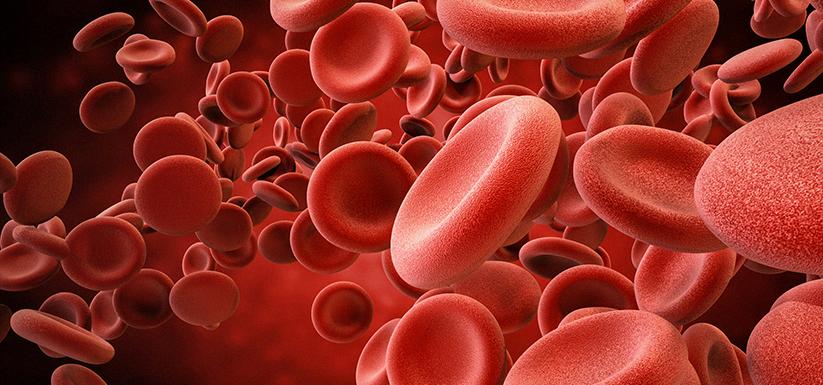Twins are a fascinating phenomenon that has always captured the attention and curiosity of many. Whether it’s the similarities in appearance or the unique bond they share, twins never fail to leave us in awe. One question that often arises is whther twins have the same blood type. In this blog post, we’ll explore this topic in detail and shed some light on the science behind it.
Firstly, it’s important to understand that there are two types of twins: identical and fraternal. Identical twins, also known as monozygotic twins, are formed when a single fertilized egg splits into two embryos. This means that they share the same DNA code and are essentially clones of each other. Fraternal twins, on the other hand, also known as dizygotic twins, are formed when two separate eggs are fertilized by two different sperm. This means that they are genetically similar but not identical.
Now, coming back to the question of blood types, it is possible for twins to have different blood types. This is particularly true for fraternal twins, as they are essentially siblings who happen to be born at the same time. As with any two siblings, they can inherit different blood types from their parents, which means that they may not necessarily have the same blood type as each other.
However, the situation can get a bit more complicated when it comes to identical twins. Since they share the same DNA code, you might assume that they would also have the same blood type. However, this is not always the case. In rare instances, identical twins can have different blood types due to a phenomenon called twin blood group chimerism.
Twin blood group chimerism occurs when the blood cells of twins mix together in the womb. This can happen when one twin’s blood cells cross the placenta and enter the bloodstream of the other twin. As a result, the twins can end up with a mixture of each other’s blood cells, which can lead to them having different blood types. While this is a rare occurrence, it is an interesting example of how complex and fascinating biology can be.
Twins can have the same blood type or different blood types depending on whether they are identical or fraternal. While it’s more common for fraternal twins to have different blood types, it’s not impossible for identical twins to have different blood types as well. The science behind twin blood group chimerism is still not fully understood, but it serves as a reminder of how much we still have to learn about the human body. Twins will continue to intrigue and captivate us, and we can’t wait to see what scientific discoveries lie ahead in this field.
Can Twins Have Different Blood Types?
Yes, it is possible for twins to have two differet blood types. There are two types of twins: identical and fraternal. Identical twins occur when a single fertilized egg splits into two embryos, resulting in two babies with the same DNA. Fraternal twins, on the other hand, occur when two separate eggs are fertilized by two separate sperm, resulting in two babies with different DNA and physical characteristics.
In the case of fraternal twins, it is possible for them to have different blood types if they inherit different blood type genes from their parents. For example, if the mother has blood type A and the father has blood type B, one twin could inherit the A gene from the mother and the other twin could inherit the B gene from the father. This would result in one twin having blood type A and the other twin having blood type B.
In the case of identical twins, they typically have the same blood type because they have the same DNA. However, it is possible for them to have different blood types due to a genetic mutation that occurs in one twin but not the other. This is a rare occurrence, but it has been documented in medical literature.
In summary, it is possible for twins to have two different blood types, especially in the case of fraternal twins. While it is less common for identical twins to have different blood types, it is still possible.

The Rarity of Twins Having Different Blood Types
It is extremely rare for twins to have different blood types, a condition known as twin blood group chimerism. Only 30-40 cases have been reported worldwide, and these cases were usually discovered by chance during routine blood group testing in hospitals or blood banks. In most cases, the level of blood group mixing observed was relatively low, with mixtures of 50/50%, 25/75%, or 5/95% being the most common.
Do Fraternal Twins Share the Same Blood Type?
Fraternal twins, also known as dizygotic twins, come from two separate eggs fertilized by two different sperm. As a result, they can have different genetic makeups and may or may not have the same blood type. In other words, fraternal twins may have the same blood type or different blood types, depending on how their genes are inherited. Therefore, it cannot be said that fraternal twins usually have the same blood type, as it varies from case to case.
Do Identical Twins Have the Same Blood DNA?
Yes, identical twins have the same blood DNA. This is because identical twins are formed from a single fertilized egg that splits into two embryos. As a result, they share the same genetic material, including their DNA code. This means that their blood type and other genetic markers will be identical. It is important to note that while identical twins have the same DNA, there may still be some genetic differences that arise due to environmental factors or mutations that occur after the split.
Determining the Blood Type of a Child
When it comes to determining the blood type of a child, both biological parents play a role. The child’s blood type is determined by the genes they inherit from their parents. Each parent contributes one of their two alleles, or versions of a gene, to the child. There are three alleles that determine blood type: A, B, and O.
If both parents have the same blood type, the child will also have that blood type. For example, if both parents have type A blood, the child will have type A blood.
If one parent has type A blood and the othr has type B blood, the child can have either type A blood, type B blood, or AB blood. This is because both the A and B alleles are dominant, meaning they will express themselves over the recessive O allele.
If both parents have the O allele, the child will also have type O blood. However, if one parent has type A or B blood but also carries the O allele, and the other parent has type O blood, the child could have either type A or B blood.
In summary, both parents contribute to determining the blood type of their child. It depends on the alleles each parent carries and how they combine in the child’s genetic makeup.

Source: thetech.org
Incompatible Blood Types for Conceiving a Baby
Blood types that can cause complications during pregnancy are Rh factor and ABO blood type. If a woman with Rh-negative blood is pregnant with a fetus that has Rh-positive blood, it can result in Rh incompatibility. This can cause hemolytic disease of the newborn, wich can lead to anemia, jaundice, and other serious complications.
Additionally, there are four main blood types: A, B, AB, and O. In terms of ABO blood type, if a woman with blood type O is pregnant with a fetus that has blood type A, B, or AB, it can cause issues. This is because the mother’s body may produce antibodies against the fetus’s blood type, potentially leading to hemolytic disease of the newborn. However, if the mother has blood type A or B and the fetus has the same blood type, there usually are not any complications.
Overall, it is important for expectant parents to discuss their blood types with their healthcare provider to determine if there are any potential risks during pregnancy.
Types of Rare Twins
In addition to the well-known identical and fraternal twins, there are several other less common types of twin pregnancies. The first subtype is conjoined twins, also kown as Siamese twins, which occurs when two embryos fail to separate completely and become physically connected to each other. This is a very rare and complex type of twin pregnancy.
The second subtype is superfetation, which occurs when a woman becomes pregnant while already pregnant. This happens when a woman ovulates while already pregnant, and the second fertilized egg implants in the uterus alongside the first one.
The third subtype is heteropaternal superfecundation, which occurs when a woman has sex with two different partners within a few days and produces two different eggs that are fertilized by each partner’s sperm. This results in twins who have different biological fathers.
The fourth subtype is polar body twins, which occurs when a single egg is fertilized by two different sperm. This results in twins who share the same maternal genetic material but have different paternal genetic material.
The fifth subtype is semi-identical twins, also known as sesquizygotic twins, which occurs when a single egg is fertilized by two different sperm and then splits into two embryos. This results in twins who share 75% of their genetic material but have different sex chromosomes.
The sixth subtype is mirror-image twins, which occurs when a single fertilized egg splits later than usual in the development process, resulting in twins who are exact mirror images of each other, such as having opposite hair whorls or birthmarks on opposite sides of their bodies.
Overall, while these types of twin pregnancies are much rarer than fraternal or identical twins, they offer fascinating insights into the intricacies of human reproduction.
The Genetic Origin of Twins
The likelihood of having twins is influenced by varius factors, including genetics. However, the genetic contribution to the occurrence of twins is different for fraternal twins and identical twins. Identical twins occur when a single fertilized egg splits into two embryos, and they are not believed to be influenced by genetics. On the other hand, fraternal twins happen when two eggs are released and fertilized by two different sperm. The genetic contribution to fraternal twinning lies solely with the mother, as she is the one who releases the eggs. Therefore, the likelihood of conceiving fraternal twins is determined by the mother’s genetics, not the father’s. It is important to note that other factors, such as age and fertility treatments, can also increase the chances of having twins.

Can Parents Have a Child With Four Different Blood Types?
Technically, two parents cannot have a child with four different blood types. This is because blood type is determined by the combination of alleles inherited from both parents. Each parent can only pass on one allele to thir offspring. Therefore, the maximum number of blood types a child can inherit from their parents is three.
For example, if the mother has blood type A and the father has blood type B, their child can inherit blood type A from the mother, blood type B from the father, or blood type AB if they inherit one allele from each parent. The child cannot inherit blood type O, as both parents would need to pass on an O allele for the child to have type O blood.
In conclusion, while a child may inherit different blood types from their parents, it is not possible for them to have four different blood types.
Identifying Whether Twins are Identical or Fraternal
Yes, doctors can tell if twins are identical or fraternal. While ultrasound and membrane examination can provide some clues, the most accurate way to determine whethr twins are identical or fraternal is by examining their DNA. Identical twins, also known as monozygotic twins, develop from a single fertilized egg that splits into two embryos. As a result, they have the same DNA and are therefore genetically identical. Fraternal twins, or dizygotic twins, on the other hand, develop from two separate eggs that are fertilized by two different sperm. As a result, they share approximately 50% of their DNA, just like any other siblings. DNA testing can therefore confirm whether twins are identical or fraternal by comparing their genetic material. This information can be helpful for medical purposes, such as determining the risk of certain genetic disorders or conditions, as well as for personal reasons, such as understanding their family history and ancestry.
Are Fraternal Twins Genetically Related?
No, fraternal twins are not 100% related. Fraternal twins, also known as dizygotic twins, form when two separate eggs are fertilized by two different sperm cells. As a result, they share only 50% of their DNA, just like any other siblings. In contrast, identical twins, or monozygotic twins, form when a single fertilized egg splits into two embryos, resulting in two individuals with identical DNA. Therefore, while fraternal twins share some genetic similarities due to their common biological parents, they are not genetically identical like identical twins.
The Rarest Blood Type
The rarest blood type among the eght main blood types is AB negative. This blood type is present in just 1% of our population, making it a rarity. Despite its rarity, the demand for AB negative blood is relatively low, and finding donors with this blood type is not a challenge. However, it’s worth noting that some blood types are both rare and in high demand, such as O negative blood, which is often referred to as the universal donor blood type. In summary, AB negative blood is the rarest blood type, but its demand is not as high as some other rarer blood types.
Are Identical Twins Identical?
Identical twins, also known as monozygotic twins, are formed when a single fertilized egg splits into two embryos. As a result, identical twins share almost identical genetic material, which means they have the same DNA sequence. However, it is important to note that despite having the same DNA, monozygotic twins are not 100% the same.
Although they may have the same genetic sequence, variations can occur during the early stages of development. For instance, the timing of the split can affect the way the embryos divide, leading to differences in physical characteristics such as birthmarks and fingerprints. Additionally, mutations can also occur during development or throughout life, leading to differences in gene expression and epigenetic markers.
Furthermore, environmental factors such as diet, lifestyle, and experiences can also contribute to variations between identical twins. For example, one twin may have a diferent diet or exposure to different toxins, which can lead to differences in health outcomes.
In summary, while identical twins share almost identical genetic material, variations can occur during development and throughout life due to environmental factors and mutations. Therefore, it is safe to say that identical twins are not 100% the same.
Do Twins Have Identical Fingerprints?
No, identical twins do not share the same fingerprints. While twins may have similar physical appearances and genetic makeup, fingerprints are unique to each individual. Fingerprints are formed during fetal development and are influenced by a combination of genetic and environmental factors, such as pressure on the fingers in the womb. This means that even identical twins will have slight variations in their fingerprints, making them distinct from one another. Forensic experts rely on fingerprints as a reliable way to identify individuals, and the fact that twins have different fingerprints is an important consideration in criminal investigations involving twins.

Life Expectancy of Identical Twins
According to a recent study, the life expectancy of identical twins is estimated to be around 63.4 years. This finding suggests that identical twins live longer than the general population, as the average life expectancy for women in Denmark is 58.8 years. Moreover, the study found that female identical twins live longer than female fraternal twins, who have an average life expectancy of 61.4 years. This information is valuable in understanding the factors that contribute to longevity and could help inform public health policies aimed at increasing life expectancy.
Conclusion
In conclusion, twins are an interesting and complex phenomenon in human biology. Identical twins share the same DNA code and are formed from the same sperm and egg from their parents, while fraternal twins are formed from two different sperm and two different eggs. Twins can have the same blood type or different blood types, and it is possile for a mom, dad, and twins to all have different blood types. Twin blood group chimerism is a rare occurrence in humans, with only a few reported cases. Overall, twins continue to fascinate researchers and the general public alike, and their unique characteristics provide insight into the intricacies of human development and genetics.
